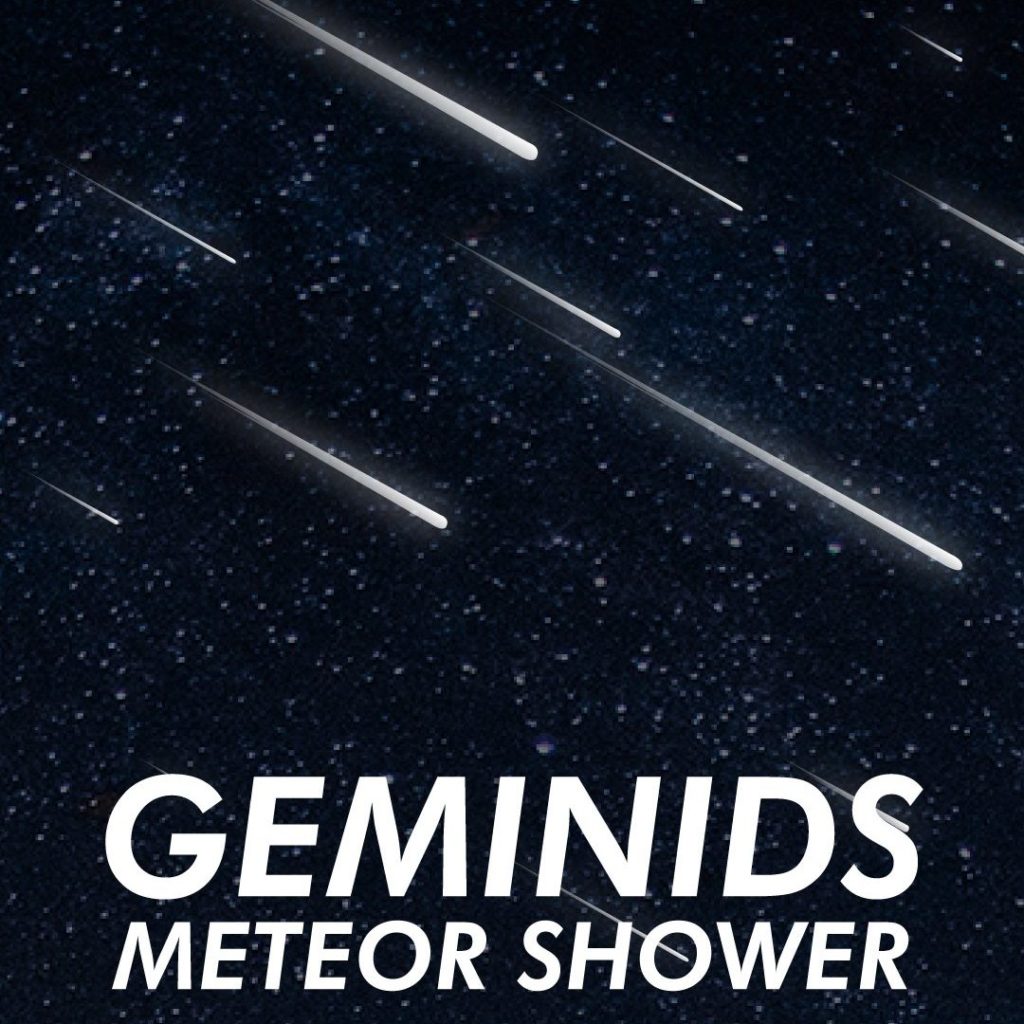
[December 07, 2023] The Geminid Meteor Shower peaks on the night of December 13th and into the morning of the 14th. This is considered to be the best meteor shower of the year — stargazers could see over 120 multicolored shooting stars per hour during its peak.
The meteors will appear to originate from the zodiacal constellation Gemini, but can appear anywhere in the night sky. December 12 will bring a new moon, creating ideal conditions for viewing the Geminids. Guests are invited to enjoy this meteor shower in the pristine dark skies above Lowell Observatory: Buy tickets at lowell.edu/buy-tickets-now.
What is the Geminid Meteor Shower?
A meteor is a piece of cosmic debris, such as rock or ice, that enters Earth’s atmosphere. Meteors can range in size from a tiny particle of dust to a large boulder.
As the meteor falls through the atmosphere and burns up, it appears as a brilliant streak of light in the night sky. When Earth encounters many meteors at once, it’s called a meteor shower.
“The origins of the Geminids are something of a mystery among scientists,” says Postdoctoral Associate and Planetary Scientist Dr. Teddy Kareta. “While most meteor showers originate from comets, the Geminids are unique in that they originate from an object classified as an asteroid: 3200 Phaethon. While astronomers have been able to track Phaethon’s 1.4-year orbit around the Sun, the asteroid’s exact composition is unknown.
“Phaethon has never been seen with a tail except when it is exceptionally close to the Sun, which led scientists to designate it as an asteroid,” explains Kareta. “The tail it develops when at its closest to the Sun might be driven by the loss of the element Sodium from its surface – unlike typical comets, which are powered by the evaporation of ices – but it is unlikely this could have been the process that made the Geminids. In other words, we know where the Geminids came from – but we don’t know how Phaethon made them.”
Some astronomers have posited that Phaethon accumulated a debris cloud after bumping into another asteroid, while others believe that Phaethon is actually a dead comet, having had all of its ice vaporized by repeated close approaches to the Sun. A third idea that has been gathering support is that it might be a relatively rare body known as a rock comet, discharging rock particles, rather than gasses, when heated by the Sun. A more recent idea is that Sodium is baked out of the surface of Phaethon when it gets close to the Sun, an idea advanced by Lowell’s newest postdoctoral fellow Dr. Qicheng Zhang.
See what else is in the night sky from Lowell Observatory and Grand Canyon Conservancy’s Arizona Night Sky Report, published online monthly.
Buy Tickets
General Admission or Premium Access Tickets
What
Opportunity to view the Geminid Meteor Shower in the dark skies above Lowell Observatory.
When
The Geminids are predicted to peak on December 14, 2023, at 19:27 UTC (12:27 PM MST), but meteors will be visible from November 19 to December 24.
Press Contact:
Cody Half Moon
Marketing Director, Lowell Observatory
About Lowell Observatory:
Founded in 1894, Lowell Observatory in Flagstaff, Arizona, is a renowned nonprofit research institution. It is the site of historic and groundbreaking discoveries, including the first evidence of the expanding universe and the discovery of Pluto. Today, Lowell’s astronomers utilize global ground-based and space telescopes, along with NASA spacecraft, for diverse astronomical and planetary science research. The observatory hosts over 100,000 annual visitors for educational tours, presentations, and telescope viewing through a suite of world-class public telescopes.